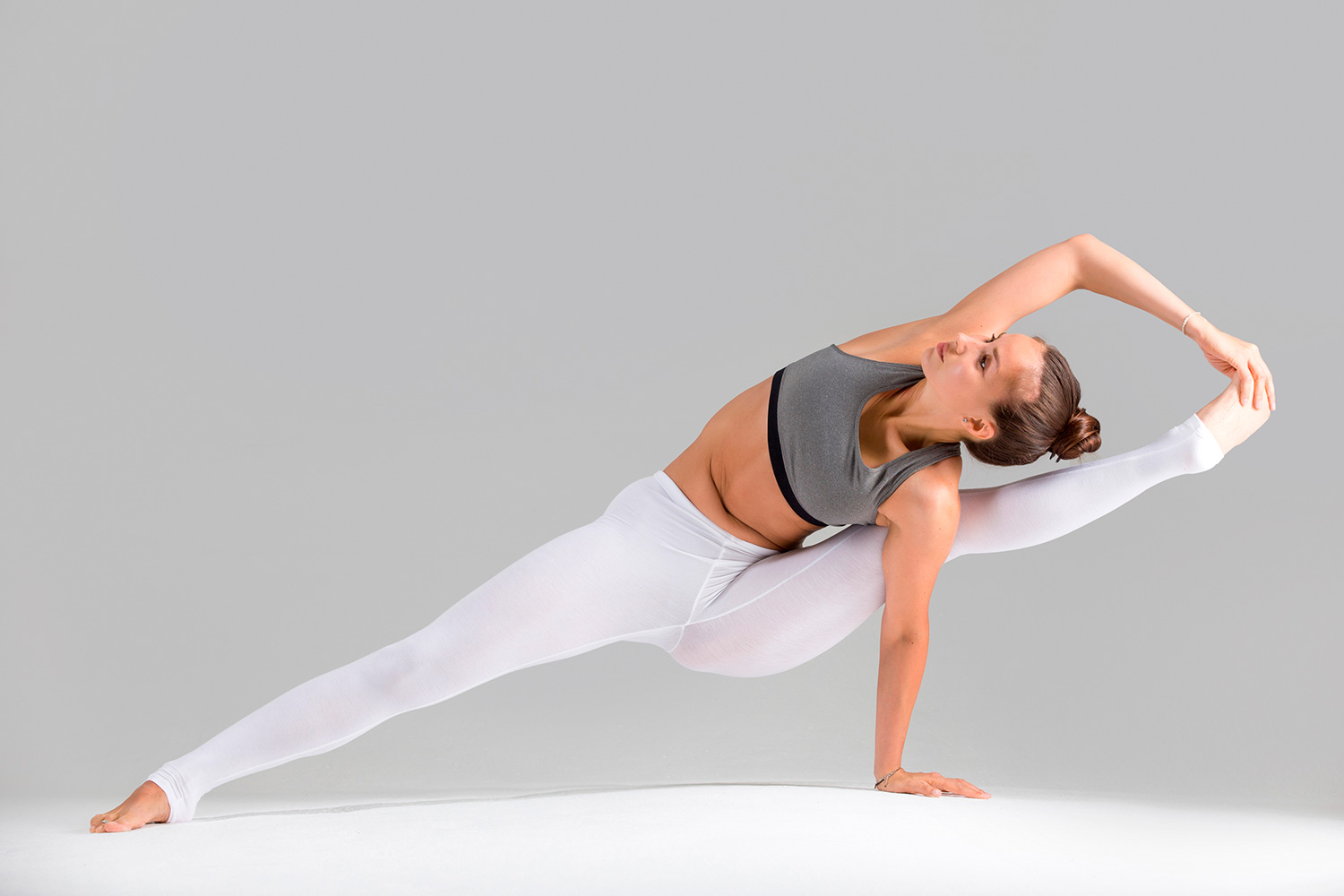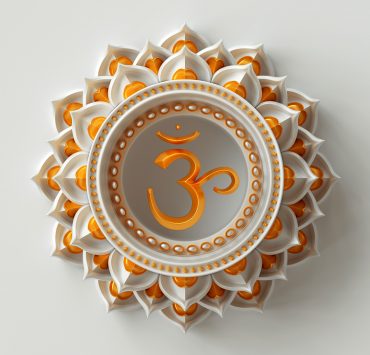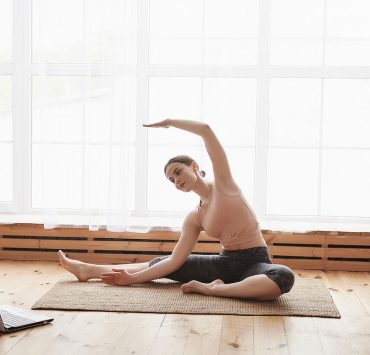
Paving the way for yogic living in Nebraska, Jacqueline Roberts…
Yoga has come a long way since its early roots in India. Over the centuries, the practice, style, popularity, and even the meaning of yoga has shifted forms and taken on different personalities. To some, yoga is an ancient movement medicine, a practice steeped in ritual, tradition, and purpose. For others, yoga acts as a form of exercise, strength training, or de-stressing habit. Maybe you fall somewhere in one of those camps or even in the middle?
No matter your unique take and experience with yoga, there is plenty about the practice to love. That is one of the amazing things about yoga – it has its own flexibility of form and meaning to resonate with each person in their own way.
But the history and true, original concept of yoga is something worth exploring. Understanding where yoga came from, and just how it has transformed over the ages (or not) will help you form a deeper connection with the practice. So let’s find out what yoga is really all about!
History of Yoga

Yoga is believed to have originated about 3,000 years ago in India, as part of the ascetic and śramaṇa movements. The Yoga Sutra is a 2,000-year-old document that was the first to put the oral traditions of yoga on to the page. In its early days, yoga was practiced as an apprenticeship with a one-on-one bond between teacher and student. The Yoga Sutra made this information about yoga, but also guidelines on life in general, accessible for future generations.
Hatha yoga was developed as a form of meditation. Integrating the mind to the physical body was crucial for finding true embodiment and connection. Over the centuries, different religions and cultures have made use of yoga in varying ways. It has been recommended for a wide variety of medical illnesses and conditions and is often a key part of a spiritual practice.
Yoga came to the West more predominantly in the 1980’s as teachers like Yogi Bhajan, Indra Devi, and B.K.S. Iyengar. Today, large cities and small towns across the West enjoy their pick of yoga styles and studios to find health and a deeper connection to life.
What is Yoga?
These days, yoga is a household term. Even those who have never tried yoga are familiar with the idea and likely know someone who loves it. There are different styles and forms and many of us are even familiar with these more specialized terms; ashtanga, hatha, kundalini, vinyasa, power, prana, yoga nidra, bikram, and more. Each of these forms has their own set of ideals, but the core principals of yoga are the same. So, what really is yoga? It’s the marriage of body, mind, and soul through connection and balance.
Body: Yoga is About Physical Movement

Today, many people seek out yoga classes or a home practice to help heal their physical bodies in some way. They are hoping to grow stronger, more flexible, or even heal health issues like back pain or to enjoy a healthy pregnancy.
The original forms of yoga were very much interested in the human body as well. There was a great desire to integrate the body with the breath and the divine. Taking on the physical structure of the asanas was, and is, a form of meditation. Out minds are brought fully to feeling and staying present with the body in each moment. B.K.S Iyengar put it beautifully: “My body is a temple, asanas are my prayer.”
Now more than ever, our stressed-out and disconnected society needs to reestablish a healthy mind and body connection. Yoga can help to start that shift. Dedicating time to fully immersing ourselves in the experience of our bodies is the first step to reclaiming our health and sovereignty.
Mind: Yoga Is About Quieting And Focusing The Mind

The connection of mind and body is integral in any yoga practice. In fact, silencing the mind as in meditation is one of the key goals of yoga. At its core, yoga is the practice of movement with mindfulness. It provides a tool for us to get out of our heads and onto the mat.
The physical practice of yoga is half the battle. How many times have you been in the midst of a yoga class and realized you hadn’t stopped worrying about your to-do list or ruminating over what a coworker said earlier? It’s inevitable – just as in stationary meditation styles. Allowing yourself to slip, but then returning to the breath and the form is a magical way to turn off this overthinking and find that sought-after peace.
Yoga is also about intention. Setting an intention before practice and holding it in your mind throughout your session is a powerful way to harness control over your thoughts and direct them in a positive way. We may choose to dedicate our practices to a person, a personal goal we have for ourselves, or something else that’s on our minds. When we link intention with the physical practice and transformative breath, the rewards multiply.
Lastly, yoga is about rewiring your mind. Left to its own devices, the mind will wander endlessly, filling your waking space with thought after thought (and many of them undesirable). Consistent yoga practice starts to unravel this habit as you spend more and more time out of this cycle and connected to the present moment. With practice, we take this superpower off our mats and into our daily lives. Many people who practice yoga regularly notice that their minds are calmer, and thoughts are more positive. They feel more engaged with the moment and feel less distracted by a “monkey mind.”
Soul: Yoga Is About Connecting To A Deeper Purpose And Doing Good

While there is no need to follow any specific religious system to practice yoga, it does have a history stepped in spirituality.
Yoga was first developed as part of the Hindu tradition, but you don’t have to follow a certain religion to take part – yoga has much to offer anyone. However, one important defining characteristic of the original form of yoga is the moral and soul-guiding teachings of the eight-fold path.
Pantajali’s Yoga Sutra defines the eight limbs of yoga, sometimes referred to as the Eight-Fold Path. This set of guidelines helps to establish a well-rounded practice of yoga that goes far beyond the physical practice. Different limbs hold different messages for how one should behave and interact morally with their world. Some teachings included nonviolence, non-covetousness, non-stealing, cleanliness, surrender, breathwork, concentration, and interconnectedness.
Connectivity: Yoga Is About Vast Inter-Connection

Connection is a powerful thing. We need connection to thrive and enjoy our lives on this earth. Connection can come in many forms, and yoga has the power to teach them. In fact, connection is one of the things that makes yoga such a unique form of movement and meditation
The first important connection in when practicing yoga is the breath and body. Pranayama exercises are very much a part of yoga, as is syncing your movements and flow with the natural and intentional flow of the breath. Inhale, exhale. By working through your yoga asanas with a connection to the breath in mind, you will have a deeper experience with your practice.
Another area of beautiful connection that yoga provides is that of the student and their community. This happens in a few ways. The first is the very direct experience of connecting with your teacher and the other students in your class. Entering the sacred teaching space of yoga allows us to drop our mental and emotional armor and integrate into a community healing and growing space. While solo practice is beneficial in its own ways, there is something very special about our group yoga sessions. You can feel it when you say your final “namaste” – the sense of togetherness.
One last, yet very important connection we make through yoga is with our community at large. This includes our family, close friends and neighbors, and our wider local area. Through the consistent practice of yoga, we learn to interact with the people around us in a different way. We are more respectful, open, and compassionate. Yoga teaches us that really, we are all connected on this earth and to this earth. Engaging with your fellow neighbors in a heartfelt way not only makes your life improve but helps you to improve the world at large.
Balance: Yoga Is About Coming To Center

Yoga is known the world over for its ability to help us find balance. Balance in our poses, balance in our daily lives, and balance as human beings in general. It teaches us how to move more fluidly in a hectic world and to stay calm and present.
There’s no doubt that finding balance is one of the great gifts of yoga, whether you have a deeply spiritual connection with the practice or a purely physical one. There is also the balance between our egos and our higher selves. The balance between push and pull and the balance between inner and outer. Through the practice of yoga, we learn to wobble between these different layers and to always come back to center.
Embrace the Full Meaning of Yoga

Even if you love yoga for the amazing glow and strength you feel after your sessions, it’s well diving a little deeper into the other, original side of yoga. Getting to know why yoga has been so well-loved over the centuries and all over the world might even open your eyes to a new way of engaging with this time-honored practice. We can all enjoy a little self-improvement by honoring some of the teachings of the Eight-Fold Path and learn the importance of community by stepping into a class with an open heart. However you choose to enjoy yoga, remember to ask yourself often: what is yoga really all about?
What's Your Reaction?
Paving the way for yogic living in Nebraska, Jacqueline Roberts is adored by her students as a constant source of support and inspiration. A knack for writing allows her to share what she has learned with the world.














